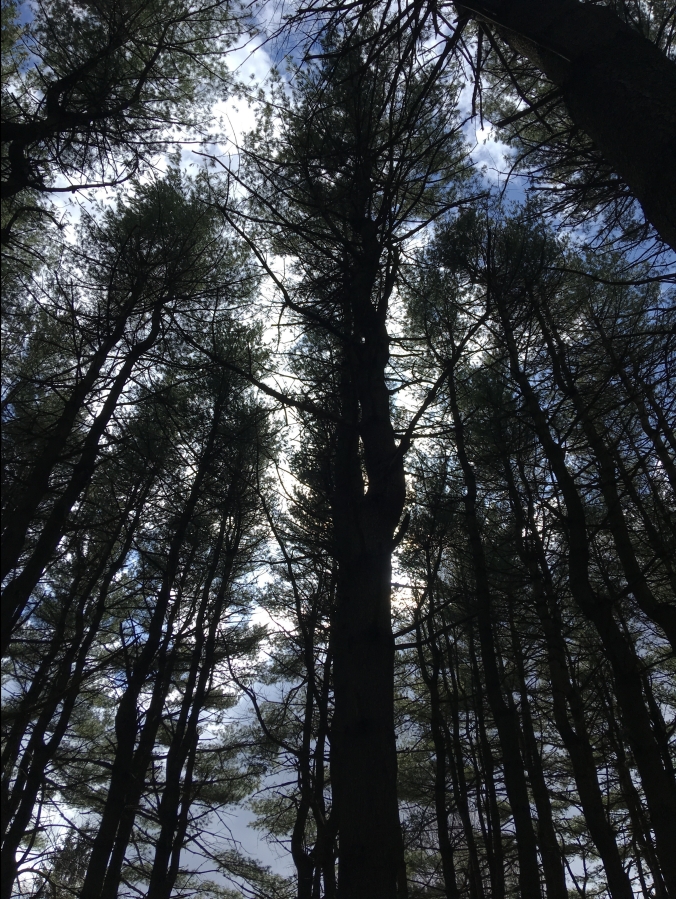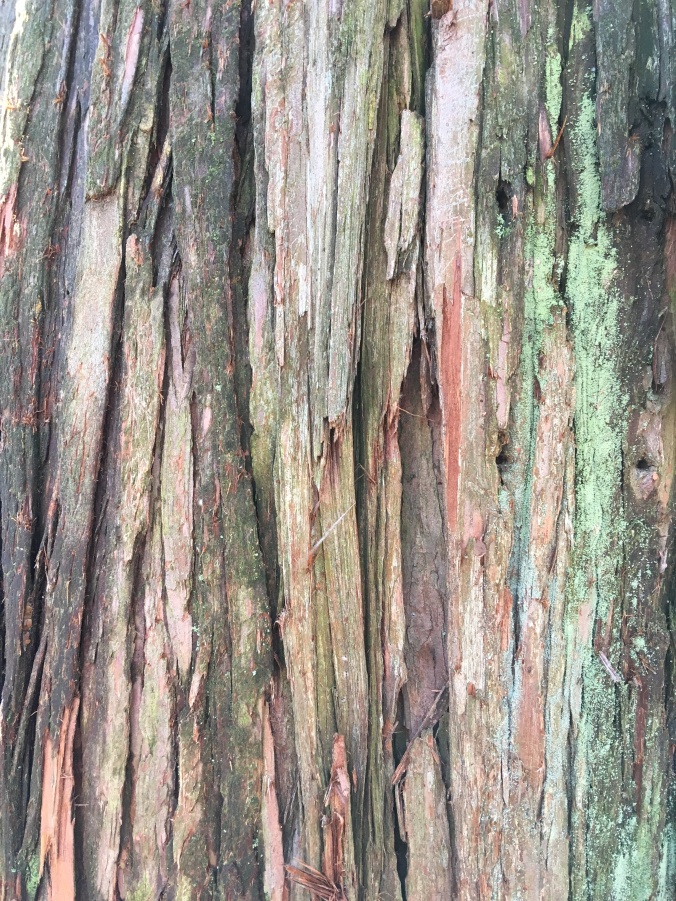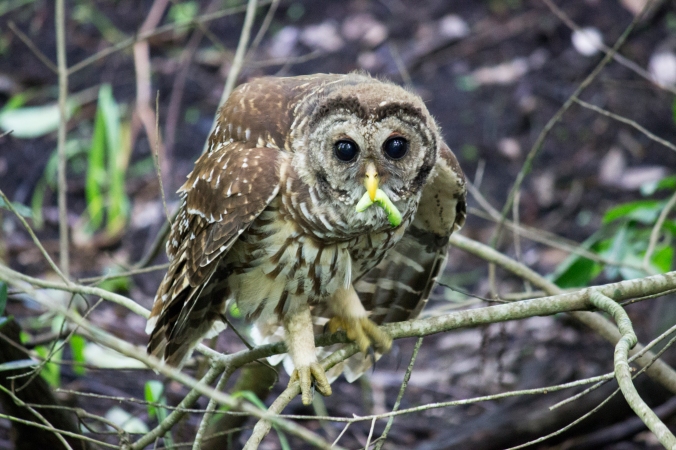Bare tangled branches up against a cerulean blue. That’s all I see when I raise my binoculars and search for the Pileated Woodpecker I keep hearing. The woods, especially unfamiliar ones, can have tricky acoustics. Is the sound bouncing off the small peak that I just summited? The noise was ahead of me, and now it is behind me. I sigh and squirm on the mossy rock where I am crouching.
The early spring woods are reinforcing the lesson I seem to keep learning in other facets of my life. Patience. Patience while my left foot takes its long, circuitous journey to complete healing. Patience while I wait for another book idea to fully blossom. The never-anticipated need to be patient while my mother continues the “long goodbye” that is so emblematic of dementia (that phrase was the title of Ronald Reagan’s daughter’s memoir about losing him to Alzheimer’s disease). Mom is in her bed with the remarkably life-like artificial tulips I brought her yesterday. I am out here in the woods, thinking of her.
The woods remind me to be still, to listen and remember that all is well, in the sense that the beauty of the world and its workings is a constant, that it can bring me comfort. I remember that time will, eventually, bring peace and healing. Thinking about mom, I am brought back to young childhood, when I sat on her blue flowered bedspread eating tangerines. She is reading me part of Pippa Passes by Robert Browning.
The year’s at the spring
And day’s at the morn
Morning’s at seven
The hillside’s dew-pearled
The lark’s on the wing
The snail’s on the thorn
God’s in his heaven–
All’s right with the world.
It’s a simple stanza and I can just about recall the whole thing. More than the words, I remember the cadence, which sounds to me like a conversational and optimistic list, the poet making a convincing case that spring is, indeed, here. I muse about how, more than once, I have called these words up to help me cope with losing mom. She couldn’t have known when she gave me these words that I would use them in such a way!
Today I saw thorns, but there were no snails on them. I heard a far-off, high bird call, but probably not a lark. But after I settled into the forest, so much looked and sounded right, just as it was for Pippa. The woodpecker’s rhythm sounded almost thoughtful for a while. The birds, too, were not as excited as I’ve heard them on many mornings amid the tall conifers in my yard. The long spaces between their chirps and chortles helped me hold longer spaces between my thoughts. I start to look and listen and feel and smell instead of simply thinking, instead of planning ahead, instead of worrying, even instead of grieving. This is a welcome oasis, a place from which I can draw quietude and strength.

My new Trombidium friend
I am taken with a fallen tree whose once loamy root ball has now eroded into a spiky, dinosaur-armor-like projection. Termites have been busy here, breaking the aged wood into inch-long, roughly rectangular chunks. I am startled to see, crawling on the base of a nearby tree, the most fluorescent orangey-red insect I’ve ever seen, about the size of my pinky nail and quite lively and leggy, zooming up, down, and sideways. I muse about how mom would love the color—she often wears bright colors like this. I try to capture his image, even shooting a crude movie with my phone. How I love not knowing the exact kind of bug this is. I wonder about his life, his day-to-day tasks. (When I look him up on iNaturalist later I am pretty sure he is a Trombidium, a genus of mite that is apparently quite common. Despite so much time spent in nature, I’ve never seen one before).

Hornet’s nest from last season
There is so much to take in as I follow Camille’s Way, a trail in the Highlawn Forest property adjacent to the Connecticut Forest & Park Association building. The prize of an old hornet’s nest overhanging the murky green pond. The long, refrigerated corridor of conifers that smells like incense and feels like a wise, old friend. The birdsong that becomes more elaborate when I close my eyes. When I am still I realize that the now-noisy Pileated Woodpecker is not the only bird in town. Others are chiming in, too, more subtly, more gently.

Conifer grove
When I start to see Route 66 off in the distance, and some houses and such., it makes me feel like I’m in a secret realm– still close enough to entertain thoughts of civilization, and removed enough to treasure my solitude.
When I rejoin my group at the nature writing retreat I am facilitating, we talk about the nuances in nature, and how sometimes it’s good to notice and record the less “pretty” aspects of nature—the dead tree; the random, unexplained bone on the trail. But today, maybe because of what I need most, it all looks quenching, uplifting, hopeful to me. I see beauty even in the termite-destroyed tree, and in the sometimes nearly black, wet leaf litter that appears to block out all life.

New life
I know that life thrives below the dark surface, and that many small creatures have overwintered there. Pushing some of the sodden leaves aside I see green sprouts trying their best to emerge. I give them a head start by clearing a space but know that even without my help they will, with time, find a way. I know that all these flora and fauna, all of us, go back to the earth. Our lives give rise to more life, and I mean much more beyond birth and the whole “dust to dust” thing. I have learned so much from mom and will always carry her grace with me, hopefully passing some of it down to Gavin and distributing the wealth of it among all I encounter.
The woods are where I learn to be patient. The woods are how I come to believe in resurrection. As mom so often used to say (quoting Frost), they are “lovely, dark, and deep.” How glad I am to visit them again.

Skyward



 I don’t really believe the title. I love long-form nature writing–both reading and writing it. But these days, in terms of the day-to-day stuff, I’m really enjoying the briefer, twice-weekly
I don’t really believe the title. I love long-form nature writing–both reading and writing it. But these days, in terms of the day-to-day stuff, I’m really enjoying the briefer, twice-weekly 
 I feel compelled –maybe even
I feel compelled –maybe even 





















 On Saturday, I went to see an old friend: the natural world! I’d only been able to visit her for short stints in recent weeks. And the timing was great— it was
On Saturday, I went to see an old friend: the natural world! I’d only been able to visit her for short stints in recent weeks. And the timing was great— it was 











